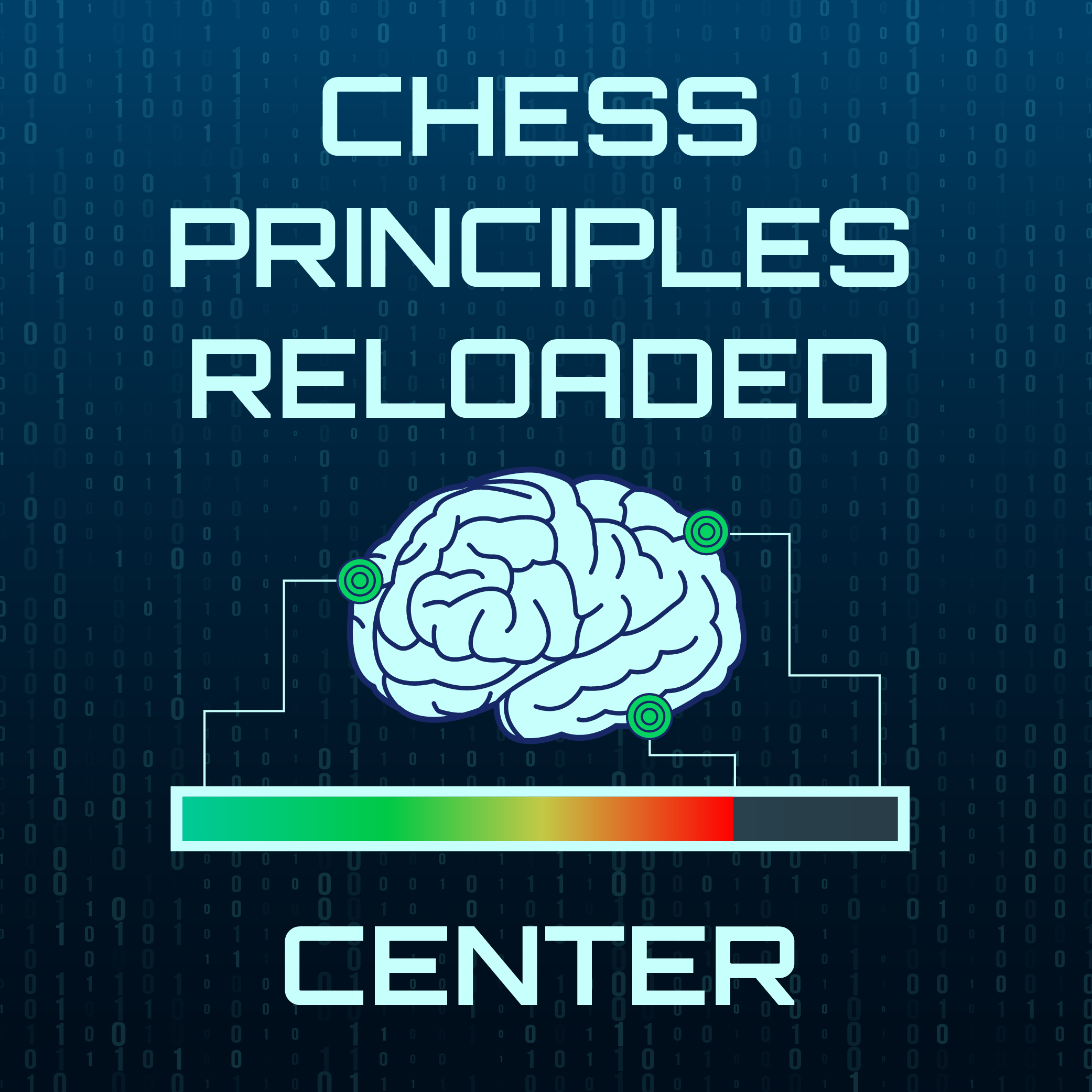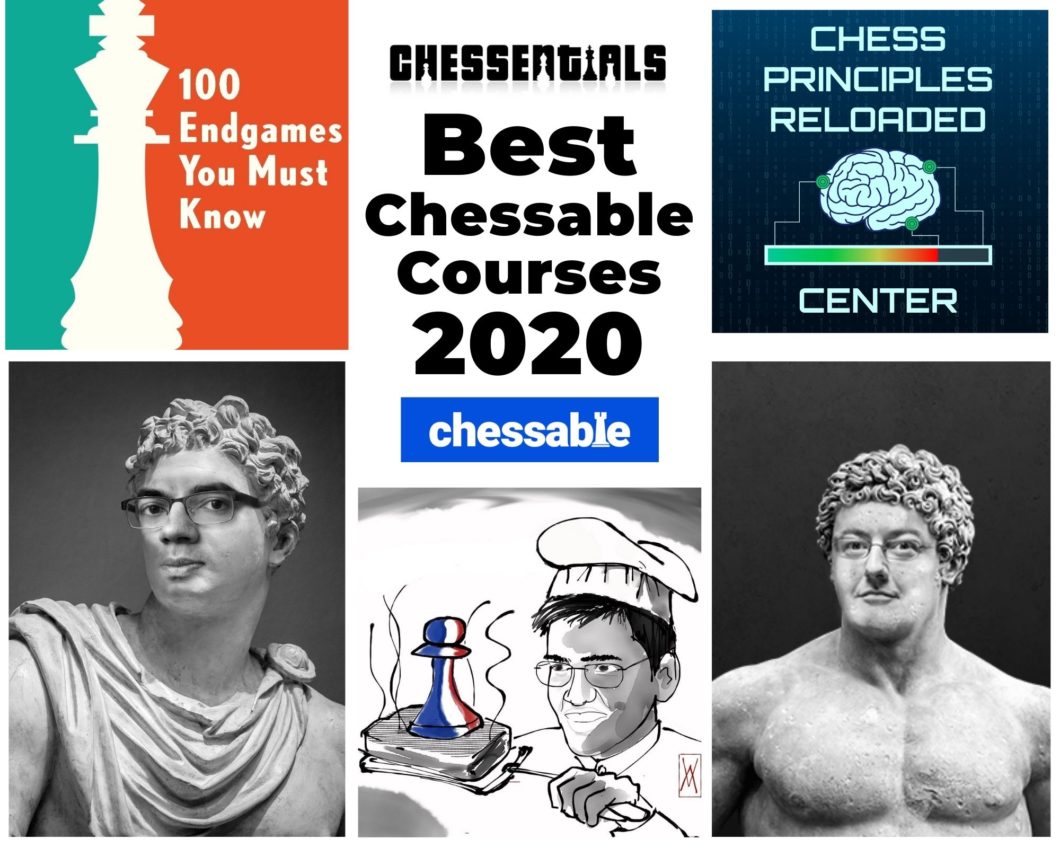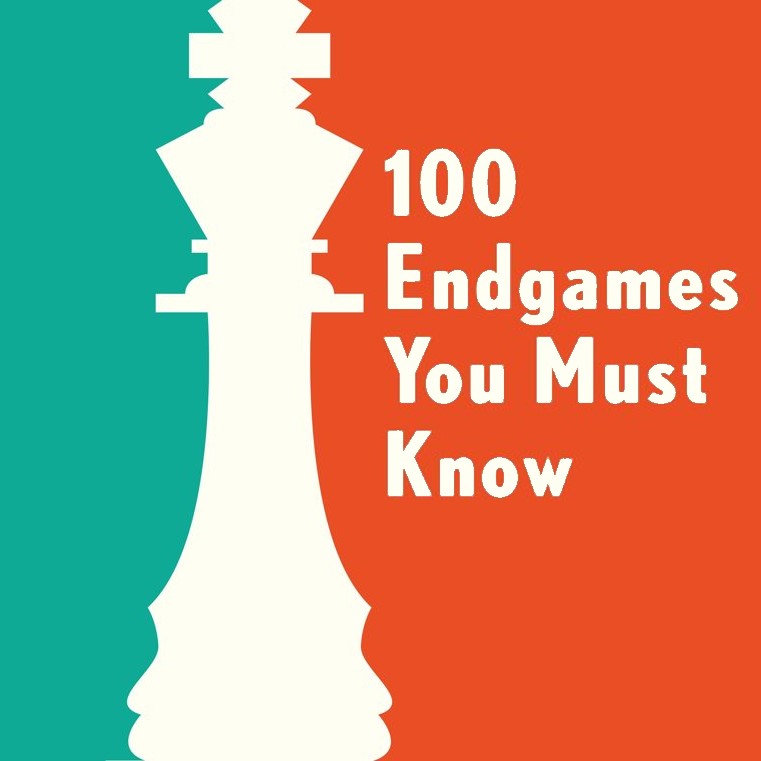Table of Contents
INTRODUCTION
In 2019, I wrote my first yearly wrap-up of the best chess books I have read, with the hope that it will become an annual tradition. I was, fortunately, able to write the 2nd iteration in the series this year, as well, and am planning to continue doing so in the future.
However, in 2020 I also started working at Chessable – a company that sells interactive digital online courses. I immediately realized making a similar „Best of“ list would be helpful for Chessable in terms of spreading the word about Chessable’s products, but also from the perspective of SEO and backlink building. But I also believed it might be helpful for users to have a lot of information in one place and to get an insight about certain courses from someone who has actually already studied them.
Thus, since I am not only a Chessable employee, but also a very enthusiastic user of the platform, 1 I have decided to start another tradition of writing annual wrap-up posts related to Chessable courses.
Now, before we get to an actual list, there is a disclaimer I would like to point out.
Even though the title of this post is „Best Chessable Courses 2020“, it is highly subjective as it refers to the Chessable courses that appealed to me. It does not apply that the 10 courses below are BETTER than other Chessable courses – merely that there are subjective or less subjective reasons (the topic, choice of variations, style of analysis, author’s way of presenting things) why I spent more time studying them than some others.
Of course, I won’t deny the quality of the content varies on Chessable and that „quality“ wasn’t a factor when assembling this list at all. But the list of high-quality courses available on the platform is far greater than 10 and it will only increase in the future, so I had to put a stop somewhere and judge them using more subjective criteria. 2
Also, this post does not necessarily refer to the courses published in 2020. I have included some courses published way back in the day. The aim of this post is to single out 10 of my favorite courses that are available on the platform at the end of 2020.
With that being said, let me present you with a list of the best Chessable courses in 2020.
Hope you will enjoy it and find it useful.
BEST CHESSABLE COURSES 2020
Lifetime Repertoires: Caro-Kann by GM Erwin L’Ami
What is the course about?
Chessable’s Lifetime Repertoires are opening courses that tend to provide the user with an overall, long-lasting repertoire based on a certain move (1. e4 or 1.d4 for White) or against a certain move (1. e4 or 1. d4 as Black). Lifetime Repertoires: Caro-Kann is, thus, an overall repertoire against 1. e4 revolving around the move 1…c6.
The course covers every possible reply at White’s disposal after 1.e4 c6. And when I say every, I really mean every. Apart from all the main lines such as the Advance variation and Classical variation, L’Ami also covers things like Fantasy variation, Exchange variation, Panov Botvinnik and even goes as far to cover all the sidelines on move 2 such as 2.d3!?, 2. b3!?, 2. f4!? and many others.
Why have I included it on this list?
Even though I have been primarily playing the Modern Defence against 1.e4, for a long time I have been pretty aware I do need a more reliable weapon. I have been kinda aware that Sicilian might be a good choice, but have been lazy to pick it up.
As an „in-between“ solution, I have ventured some Caro-Kann without knowing too much theory in the past and have had relatively decent results. 3 I decided I might use some theoretical knowledge, so when Erwin’s course came out, I started studying it slowly and have also used it to prepare for one or two league games of mine this year (which ultimately ended in a draw).
There are several reasons why this course is simply outstanding. First of all, it is very deeply and thoroughly analyzed. Erwin is the former second of Veselin Topalov and the current second of GM Anish Giri and it definitely tells throughout the course.
However, it is not only about the analysis itself – the course is also deeply annotated and full of subvariations that explain finer points of the position to great detail. Erwin is not only a strong analyst but also a „man of chess culture“ and he also provides detailed historical background and a nice overview of the developments in the Caro-Kann throughout recent years.
Last but not least, Erwin is a very enthusiastic and engaged user of Chessable who really had a deep understanding of Chessable as a platform and it really tells throughout the course. Wherever possible, he went an extra mile to make the learning experience enjoyable – he even included multiple weapons to battle White’s most common moves (3…c5 and 3…Bf5 against the Advance variation and 4…Bf5 and 4…Nf6) against the Classical variation.
He is also very active in the course forums and very fast to reply and clarify any questions a user might potentially have.
So long story short, it is very clear that this course is a labor of love and that Erwin spent almost 3 months working on it and I would whole-heartedly recommend it to any chess player considering playing the Caro Kann as Black.
French Toast: How Harikrishna fries 1.. e6 by GM Pentala Harikrishna

What is the course about?
This course was the first course on Chessable created by elite GM.
As the title suggests, French Toast: How Harikrishna fries 1…e6 is a „Anti French Defence course“. GM Pentala Harikrishna provides the student with a repertoire against the French Defence revolving around the main move 3. Nc3 (1. e4 e6 2. d4 d5 3. Nc3).
The „meat and potatoes“ of the course are two main lines of the French: Winawer with 3…Bb4 and Steinitz with 3…Nf6. Harikrishna doesn’t go for the mainlines and chooses relatively more rare variations (4. exd5 against the Winawer and 4. e5 Nfd7 5. Nce2!? against the Steinitz) and tries to demonstrate that they are more practical than main theoretical lines, yet that they also contain a lot of venom for the Black player.
He also covers all the possible replies by Black on move 3, including the offbeat systems such as 3…Nc6, 3…h6, 3…a6, and many others.
Why have I included it on this list?
Just like many other club players, I have struggled against the French Defence for ages, so when I saw GM Harikrishna publishing an Anti-French repertoire, I didn’t hesitate twice to buy it.
And even though many books in the past have provided white with weapons against 1.e4 e6, (such as Parimarjan Negi’s famous Volume 1 of his 1.e4 series) none of them appealed to me as much as this one. I really liked Harikrishna’s choice of lines as I have found them more practical indeed + I have also realized many Black players don’t encounter them as often as other attempts.
That is especially true of all the sidelines on move 3, where Hari provides easy and clear-cut solutions and emphasized understanding over memorization. The main lines of the course are far more demanding, theoretical, and difficult to learn, but in my opinion, they are worth it.
My results against 3…Nf6, in particular, have improved tremendously after picking up Hari’s proposed plan with 4. e5 Nfd7 5. Nce2 as I found the overall concept of reinforcing the center with c3, placing the bishop on d3 and knight on f4 very intuitive (even though it is not that simple, of course).
Unfortunately, I can’t say the same for the lines against 3…Bb4, as they haven’t appealed to me to the same extent. But to be fair, I haven’t devoted a similar amount of attention to them and tried employing them in my own games to have any concrete evidence for my hypothesis.
In any case, this is yet another Chessable course where you have an opportunity to experience super-GM level of analysis first hand, yet despite that the course is not overly long.
So if you are searching for a weapon against the French Defence, I can definitely recommend it.
The Complete Chess Swindler by New In Chess and GM David Smerdon
This course is a Chessable implementation of the famous New in Chess Book, accompanied by a video presentation by GM David Smerdon personally. You can find more details about the book in my post about best chess books 2020 where I wrote about it in greater detail, but in a nutshell – the book covers the topic of swindling 4 and tries to create a framework that can help you become better at swindling in your own games.
Why have I included it on this list?
For the same reason I have included it on my best chess book list – it is a fun, entertaining and engaging read and I found our adaptation very good. It is true that some exercises are very demanding (as it is not your typical chess tactics course), but I think trying to find the „swindling“ move works really well in Chessable’s Movetrainer format.
I also found Smerdon’s videos quite brilliant – his presentation is very energetic, lively and entertaining.
Lifetime Repertoires: Najdorf Sicilian by GM Anish Giri
This repertoire from the Lifetime Repertoires series, made by the current world nr. 11 5 is devoted to the most complicated and famous variation of the Sicilian of them all – the Najdorf Sicilian.
In this course, Giri covers every possible reply against 1. e4 c5 White can throw at us – including the ever so popular Bongcloud with 2. Ke2.
Of course, the main chapters of the course are devoted to the famous position arising after 1. e4 c5 2. Nf3 d6 3. d4 cxd4 4. Nxd4 Nf6 5. Nc3 a6!?. Giri’s choice is to go for the pure Najdorf setup with …e5, and not for the Scheveningen setup with …e6 as often as possible (with the notable exception being the move 6. Bg5!?).
Why have I included it on this list?
As mentioned above, I have been toying with the idea of starting to learn the Sicilian for ages now, but have been daunted by it forever.
Once I saw a super-GM is creating a course on it on a platform that makes it very convenient for me to study opening theory, I decided I can’t fool myself into postponing it any further. And even though the course just came out recently and I have studied only one chapter, I can already say that decision was definitely the correct one.
There are several aspects why I think this is a great course:
- Najdorf is an incredibly vast territory that is very difficult to cover and it seems to me that Anish has managed to make it as practical and condensed at possible. For example, against 6. Bg5, he recommends going for the Nbd7-Qc7-b5-Be7 development scheme as often as possible. The course also has „only“ ~900 trainable variations, which is not as enormous as you would expect.
- I really liked how the course provides a detailed overview of every variation where Giri talks in great detail about trends, various options for both White and Black and explains why he decided to go for a particular setup. It really helped me get acquainted with the basics of the Najdorf and to get some context before starting to learn the lines themselves.
- The course is once again very well annotated and explained and the analysis is once again super-impressive and to the level you would expect from someone that strong.
The only drawback I have noticed so far is the number of variations that end in a forced-draw/repetition/perpetual. But the majority of them are long, forced variations where White plays very computerish sacrificial moves and I am not sure how likely they are to appear in practice – especially on the club level.
In any case, I am definitely planning to learn this course and start playing more Najdorf in the future and I hope this review might entice someone else to start doing the same.
100 Endgames You Must Know by New In Chess/Jesus de La Villa, presented by IM John Bartholomew
This course is a Chessable adaptation of another famous New in Chess book, 100 Endgames You Must Know, written by International Master Jesus de La Villa.
It is a „shortened Endgame Theory“ book that provides the reader with 100 theoretical endgames the author considers every player should know. The Chessable version comes with more than 20 hours of video instruction by everyone’s favorite International Master John Bartholomew.
Why have I included it on this list?
Everybody who has ever played against me knows my endgame technique has been my Achilles heel. I have tried working on this aspect of the game in my past and have even read 100 Endgames You Must Know in paper form, long before it was available on Chessable (or before I was aware it was available, there).
However, in contrast to game collections where I enjoy setting the board anew and playing through the games, I found this task in the context of 100 Endgames You Must Know (and other endgame books) quite time-consuming. I also found out I have trouble remembering key positions and reviewing the content from the book that needs reviewing.
Thus, I decided to give it a try on Chessable and thought it is great I just need to click a button to have a position ready and that I am able to review the material periodically to improve the learning process.
In general, I honestly think Chessable’s MoveTrainer works really well for Endgame books and that the possibility to „drill“ the positions in a short period of time is very helpful for memorizing key theoretical endgame positions.
Break The Rules: Play the Trompowsky by FM Kamil Plichta

What is the course about?
Some of the readers of the blog might recall the name of Polish FM Kamil Plichta and how in his interview back in February 2019 he expressed his ultimate dream is to make a living out of chess.
Ever since, Kamil has managed to fulfill his dream and become a Chessable celebrity and „superauthor“ and currently has 13 courses published under his name (with more to come).
Break The Rules: Play the Trompowsky was Kamil’s first course for the platform, in which provides White with an opening repertoire against 1.d4 Nf6, based on move 2. Bg5!?. The repertoire covers all possible Black moves on move 2 and provides the user with some fascinating sacrificial lines after 2… Ne4 3. h4!? (the Raptor variation) and 2…c5 3.d5 Qb6 4. Nc3 Qxb2 5. Bd2 (the Vaganian Gambit).
Why have I included it on this list?
There are numerous and highly subjective reasons why this course is featured on this list, and I will try to present them one by one:
- This was, I believe, the very first Chessable course I ever bought and if you believe in the Butterfly effect, you could make an argument it changed my entire life. Were it not for me buying it, I would have maybe never decided to make my own course and never ended up working for Chessable.
- It has to be said I purchased this repertoire at the moment where I was experiencing a real crisis with my own chess and was not at all enthusiastic about the game. Sacrificial and entertaining variations provided in this course really helped me reinvigorate my love for the game as I got exposed to something new and exciting.
- Trompowsky is a really good practical opening that many Black players really don’t like facing.
- I am also very happy about the success my friend Kamil has experienced on Chessable and am somehow glad it all started with this repertoire.
There are some drawbacks – there are some lines that have presented me personally with some problems. I am not very fond of facing 2…e6 and I am also not very keen on dealing with 2…d5 3. Bxf6 exf6. Kamil also initially had some small analytical oversights (such as 2…d5 3. Bxf6 gxf6 4. c4 e5!? that basically kills that line), but considering it was his very first Chessable repertoire, those things are perfectly understandable. 6
But it has to be pointed out that Kamil is one of the most agile and hard-working authors to deal with the drawbacks in his courses. He is very quick to reply to the questions, he is constantly monitoring and updating his repertoires and his Trompowsky course has gone through at least one major overhaul since its first launch.
So for everyone who seeks a practical and less theoretical weapon after 1. d4 Nf6 that is not the dreaded London System, I can highly recommend the Tromp ‘a la Kamil’.
Chess Principles Reloaded: Center by IM Andras Toth

What is the course about?
One of the things we first learn when we start learning chess is the basic chess principles like develop your pieces, occupy the center, bring your king to safety. However, through his work as a chess coach, IM Andras Toth made an observation that many club level players disregard the principles once they continue their chess journey and start climbing the rating ladder. That is why he decided to create a three-part Chessable series aimed at reminding us of their importance starting with Chess Principles Reloaded.
CPR: Center is the first course in the series devoted to the topic of central control. The course consists of a number of annotated games where one side utilizes the central control to achieve a swift, and often very attractive, victory. The games are presented by the man of the hour, IM Andras Toth himself.
Why have I included it on this list?
I have a confession to make. Even though my guilty pleasure is watching „non-instructive“ chess videos of people playing chess, I was never the person who enjoys watching a lot of „instructive“ chess content and have always preferred to learn things from books/courses/on my own.
Andras’ videos are a rare exception. I find his presentation delightful and utterly hilarious. The way he explains ideas clearly and concisely, his constant bashing of the London system and his emphasis on the importance of „centaaaah“ have greatly appealed to me. I have enjoyed watching the entire video series from minute one until the very end. I am not sure if there is a secret ingredient in the Australian air that makes people like Andras and Smerdon so energetic and entertaining, but I can definitely recommend watching their content.
Of course, that is not to say that course is all mindless entertainment. The choice of games is very interesting, the selection of puzzles also very well done and the course did lamp that ‘A-H-A’ bulb inside my head when it came to thinking about Chess Principles. It is also one of the rare courses on Chessable that has an almost perfect user rating (4.9/5.0 based on 106 user ratings) and I believe it is fantastic for people below 1800 (or even 2000) rating.
Last but not least, I have also developed a friendly (Twitter) relationship with Andras and I am very happy to see his course(s) doing really well and am happy to recommend them!
The Complete Open Sicilian Vol 1 for White by NM mn79

What is the course about?
Even though we have a huge catalog of courses on Chessable, there are still some gaps remaining and one of the bigger ones is the content on the Open Sicilian for White.
The Complete Open Sicilian for White by National Master mn79 7 is a course aimed at filling this gap. In this two-part series, NM mn79 aims to provide White with an overall anti-Sicilian repertoire based on the Open Sicilian.
Volume 1 covers all the 2nd move sidelines, the e6 Sicilian, Accelerated Dragon, Nc6 sidelines, Kalashnikov and Sveshnikov.
Why have I included it on this list?
One of the beauties of Chessable is that one can easily find „hidden gems“ – courses that don’t get that much publicity, but which provide really good content. The Complete Open Sicilian for White is one such course. It is a very practical and not overly complicated repertoire against all Sicilian mainlines.
I really liked it because the author managed to strike a nice balance between length and usefulness. The repertoire is not overall, grandiose and „cutting-edge“ as some other repertoires such as Lifetime Repertoires, but it is nevertheless very decently researched and offers very decent and playable lines, aimed at getting some advantage. I primarily used it to study the Maroczy lines against the Accelerated Dragon and I really liked the author’s work and recommendations in that chapter.
It may not withstand the scrutiny of Master level and above, but I think it is a perfect starting point for club players who want to get some ideas on how to handle the Sicilian and then potentially build upon that knowledge as they progress.
Therefore, if you are looking for something not overly lengthy and practical, I can definitely recommend this one (and Vol 2 of the series). If not, well, let me just say we have a lot of surprises in store for 2021 :).
Crush the Pirc, Modern & Philidor by Chessforlife
Chessforlife is an experienced and rather well known Chessable Community (untitled) author who has already made several very ambitious repertoires aimed at refuting lesser-known/slightly dubious defences.
In this course, he provides the student with a sharp repertoire against the Pirc and my beloved Modern revolving around the Austrian Attack (early f4) and around Philidor Mainline (1. e4 d6 2. d4 Nf6 3. Nc3 e5 4. Nf3 Nbd7 7. Bc4).
Why have I included it on this list?
Even though Chessforlife is not a titled player, his repertoires are very ambitious and sharp and very well received within the Chessable community. For each and every one of them, he spends a lot of time analyzing various possibilities with top engines and offering very concrete, „I play for a big advantage“ variations.
Out of his all courses, this one appealed to me the most because:
- I already had some previous knowledge about the Austrian Attack against Pirc and Modern and I supplemented it with the lines offered in this course.
- Since I am quite familiar with the Modern from the black side, I can definitely confirm his lines are very problematic and he even paid attention to some of the variations offered in my course.
- I believe Philidor mainline is the best variation against this opening and I used this opportunity to get acquainted with it.
- In general, I like that approach of going for the throat and playing for the big advantage right out of the opening.
Of course, when relying heavily on chess engines, there is always a danger that the human factor is completely disregarded and lines are too abstract to learn. To be fair, there have been some complaints in that regard related to Chessforlife repertoires and I also think some longer lines could be more deeply annotated and explained. I can understand why some lower-rated players, in particular, could have a hard time grasping the material provided in these courses.
But in general, I think this approach is suitable perfectly for repertoires aimed against offbeat/slightly dubious defenses and that chess is a concrete game where it is worth to go for this maximalist approach.
So if anyone is looking for very sharp and critical attempts to refute these setups, I can highly recommend Chessforlife’s courses – especially this one.
The Modern Defence Against Everything by CM Vjekoslav Nemec
This course created by your trully is a repertoire for Black revolving around the move 1…g6. Despite its title, the main focus of this repertoire are White setups arising after 1. e4 and it also includes the Averbakh variation with 1.d4.
There are some plans to turn it into an overall repertoire and include 1. c4, 1. b4, 1. b3, but it is still not 100% clear when and how that will happen, so stay tuned.
Why have I included it on this list?
Even though I am aware it is very shameless and douchey to include your own repertoire into the „Best of“ list, considering it is a highly subjective one, I couldn’t do without doing it because this repertoire had a huge impact on my life – its release led to me quitting my day-time job and working for Chessable.
Aside from that non-chess factor, I honestly think it is a decent repertoire. I put many hours of analysis and writing into it and I was (and still am) proud of the final result.
Of course, that doesn’t mean it is anywhere near perfect. Since it was my very first repertoire and since I had no clue what I was doing, there are so many things I would have done differently today. I already talked about it in my promo post for this blog, but some of the things I would have changed are:
- Relied less on engines and shortened some of the long and forcing variations
- Been more careful and thorough with the analysis. I would scratch a number of variations and change them for something else today.
- Written better and clearer explanations throughout the repertoire. Even though I did a lot of writing, I got the feeling I did it „on the wrong places“ – in many places I have still seen general chess cliches such as „with compensation“ or „Black is better“ or „Black has equalized“ without ever explaining why. In the past year, I have become much more aware of the importance of emphasizing understanding even more and my course still leaves a lot to be desired in that regard.
I do plan to address these issues in the near future and fix the repertoire even more.
But all that aside, I still think it contains a lot of useful information for a potential Modern Defence player AND it literally changed my life for the better, so I have absolutely no problem mentioning it again :).
Besides, if you really thought I am NOT the type of person who would include his own work into any BEST OF list, I am not sure what you are doing on this blog in the first place.
Honorable Mention: The Fierce Nimzo-Indian by WFM Maaike Keetman
My colleague and fellow Chessable’s Publishing Manager WFM Maaike Keetman provides the student with a dynamic and combative repertoire for the Black pieces based on the Nimzo-Indian 1. d4 Nf6 2. c4 e6 3. Nc3 Bb4.
In contrast to many other Nimzo-repertoires, she refrains from going for „equalizing“ quickly with an early d5, but rather prefers to play to win by playing b6-Bb7 and/or c5 as often as possible.
Why have I included it on this list?
Even though I haven’t studied her repertoire yet and have no interest in the Nimzo-Indian for Black, I did take a look inside the course 8 and was highly impressed with its content. It is enough to say that the repertoire currently has 180k words, which is the record word-count on the site when it comes to Chessable’s original content. 9
Besides, having worked with her closely, I know Maaike’s work ethic and her dedication and have no doubt she put her heart and soul 10 into this course. Since she is one of the „elders“ among Chessable stuff, she has a good understanding of the student needs and course design and it is not at all surprising her work has been very well received.
Besides, if this repertoire wasn’t on this list, I would have to listen to „Yeah, sure, you include your own repertoire but not mine“ remarks until the end of my life.
It may be one small step for this blog, but a giant leap for the quality of the relationship between Chessable’s Publishing Managers.
- Who unfortunately doesn’t manage to use it as much he would like these days, but I am getting that legend in 2021 guys, I swear.
- The topic was most often the number one factor.
- My biggest victory up to this day – against a 2350 IM, happened precisely on the Black side of Caro-Kann.
- Drawing or winning losing positions
- At the moment of writing
- Oversights happen in not-first repertories as well and besides, it is not possible to cover everything within a single course. Besides, if someone started scrutinizing my course to the same extent… I should probably shut up :D!
- That is obviously not his real-life name, you jokesters, but he would rather not reveal at as he prefers to remain anonymous.
- The perks of the job.
- If I am not mistaken.
- For the sake of this post we will assume she does have a soul








Is the national master Mn79 Francesco Dunne
Time to do 2021 edition!